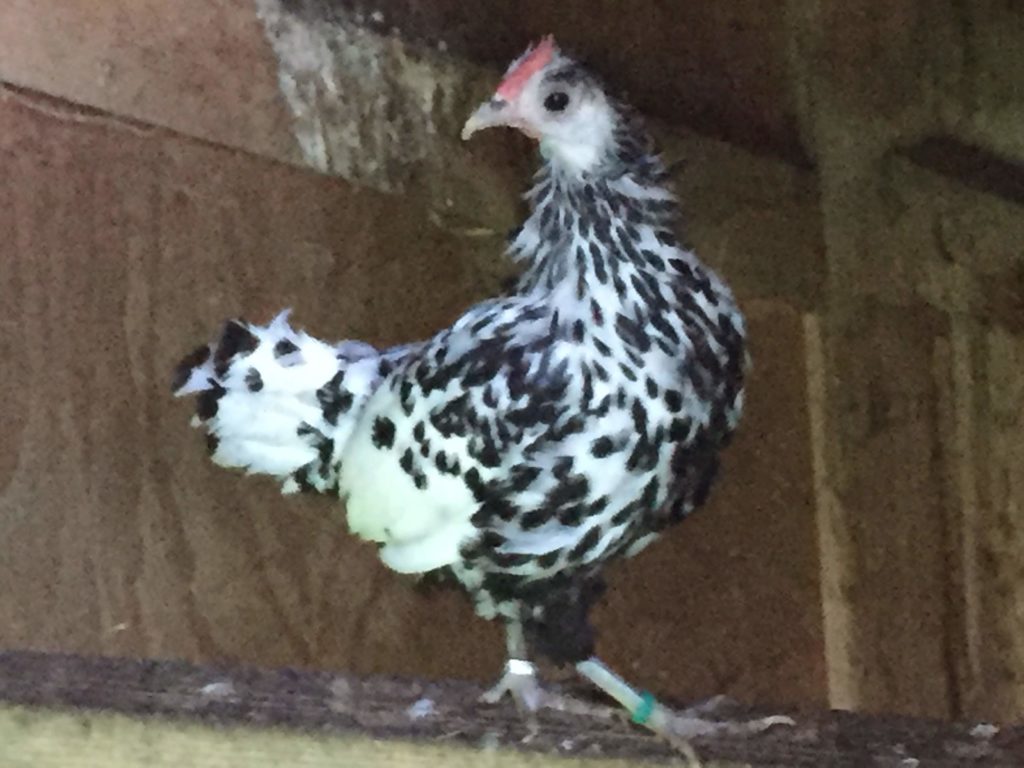As noted last time, 3 of our 4 new hens were missing, presumed dead.

We moved another hen from our flock to the chicken tractor so that the silver-spangled hamburg wouldn’t be alone. We also lined the outside of the chicken tractor with paving stones so nothing could dig right next to side and get underneath. This seemed to work as we saw no indications of any predators for several weeks.
After the quarantine period, we moved the silver-spangled hamburg and the other hen into the main barn so they could safely integrate back into the flock. They were inside a portable dog pen that was lined on the outside with chicken wire with a piece wood over the top. The barn has a concrete floor so the assumption was that nothing could dig underneath the pen.
A few days later, both hens were killed overnight. The culprit managed to get inside the main floor of the barn, and then inside the portable dog pen covered in chicken wire. The largest gaps in the pen were only an inch by a couple inches big. This time, the hens were decapitated but not eaten.
With all of the new hens (and one from the main flock) now dead and therefore no chickens were spending the night outside of the main coop, we thought the rest of the flock would now be safe as the attacks all occurred at night.
However, the chickens still liked to spend a good portion of the days inside the barn and a couple liked to climb / flap up into the hayloft to lay their eggs. A few weeks after the last attack, we found a freshly decapitated hen in the hayloft with a good portion of the rest of the flock huddled in a corner of the barn. It was still daylight. Our best guess is that she was ambushed while laying an egg or sitting on her nest.
We locked the flock inside the coop for several days, blocked off the hayloft so none of the hens could get up there to lay eggs once we let them out again, and bought a game camera so we could try to get a picture of the predator.
After changing the camera’s position many times over many weeks, we finally got a picture. It’s a weasel (or at least a relative of the weasel family)!


These are the only 2 pictures we have been able to get of the weasel. It is pretty small but still managed to kill 25% (6 out of 24) of our flock.
We haven’t seen any further sign of it since mid-January. Hopefully it has moved along to another location so it won’t bother our flock any more.
